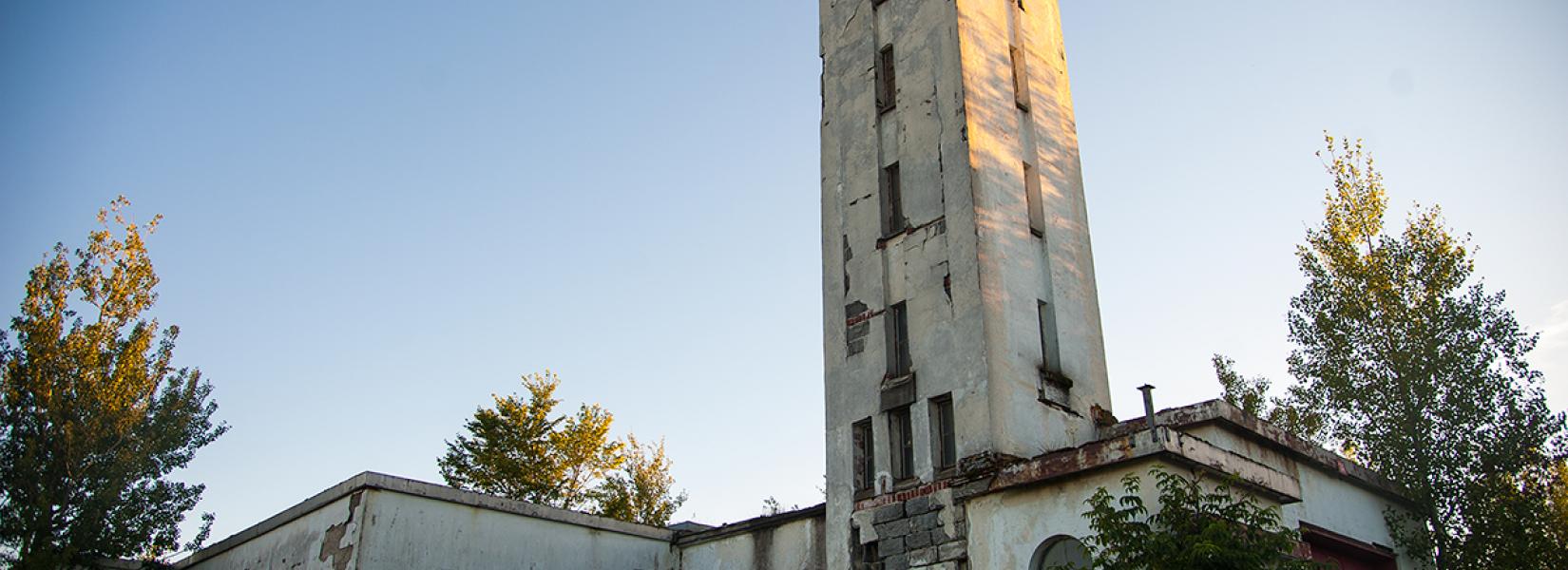The Coal mine of Hasard de Cheratte is the main colliery of Société anonyme des Charbonnages du Hasard, composed of four mine shafts. It is located in Cheratte, a section of the Belgian town of Visé located in the Walloon Region in the province...
Val Rose: the abandoned military plant
The former ammunition factory
The abandoned Val Rose plant is unquestionably one of the most famous spots in Quebec City area. And honestly, I was rather reluctant to go there. Not that I thought the spot wasn't interesting, but in general, a place known as the Val Rose is, is usually known as a "hyper vandalized where it remains nothing else except concrete and graffiti."
But no, I was wrong. The huge plant and its dozen of buildings were certainly very empty, but there was enough interesting stuff here and there to spend several hours. Because we must admit that the site is big, very big and not quite abandoned. Some buildings are still used by a wood shop. But we was at the end of the day and it was calm.
The idea of this photo shot was launched by RDX-Foto, a urbexer from Trois-Rivières. A dozen photographers responded to the invitation. Some knows each other and some do not. I was in the second group. Normally, I prefer small groups to minimize the chance of stepping on toes, especially in tight places. But hey, this term does not apply to the old and abandoned Val Rose plant. In addition, I arrived several hours after the others (due to work commitments), so I haven't the chance to talk too much with other photographers because after all, we were there to enjoy this place and this late afternoon light.
The Val Rose plant history, a ammunition factory
Regarding the story of the plant, it all starts in 1938 with the opening of the Val Rose plant, specializing in the production of small-caliber ammunition. The war is near and England is under threat of invasion by Nazi Germany. Canada is the ideal place for the production of arms and ammunition.
The plant will produce ammunition during the Second World War but after the war, the Canadian government will begin the privatization of its munitions factories from 1965. Thus, in 1967, the plant was sold to Industries Valcartier Inc. (IVI) who continue the production of weapons and ammunition for military and sporting use. The latter is also the sole supplier of lightweight ammunition for the Government of Canada and the only manufacturer of arms and ammunition manufacturer in the country.
In 1980, the Val Rose is sold again and will open a shooting range. In 1991, all production will be moved in Le Gardeur and St-Augustin (Quebec). The site was then abandoned.
Despite its abandonment for more than twenty years, the site has a lot of attention in 2007 when the city where the plant is located will be the theater's worst case of contamination of drinking water in the history of Quebec. They accuse the former owners to be spilled in nature a lot of extremely harmful chemical products to health such as (TCE) trichlorethylene, a carcinogen used in the buildings of the military base.
Related content
Destroyed by mechanical shovels in 2011, it is a true slice of history of the city of Saint-Jean-sur-Richelieu who was destroyed that day in February. The adventure of the Singer factory has lasted over 100 years and has gave work to thousand of...
I was asked to photograph it (legally) by the Trust group thats restoring the island,which was a life long dream of mine.
The history of the island began in 1900 when Francis Bannerman purchased the island. Located in the Hudson River near...
Built in 1930, the Wellington tower has ceased operations in 2000. Despite the years that have passed and graffiti artists who came to express their art, the structure of the old tower is still ok. When it was in operation, that's where that were...





















